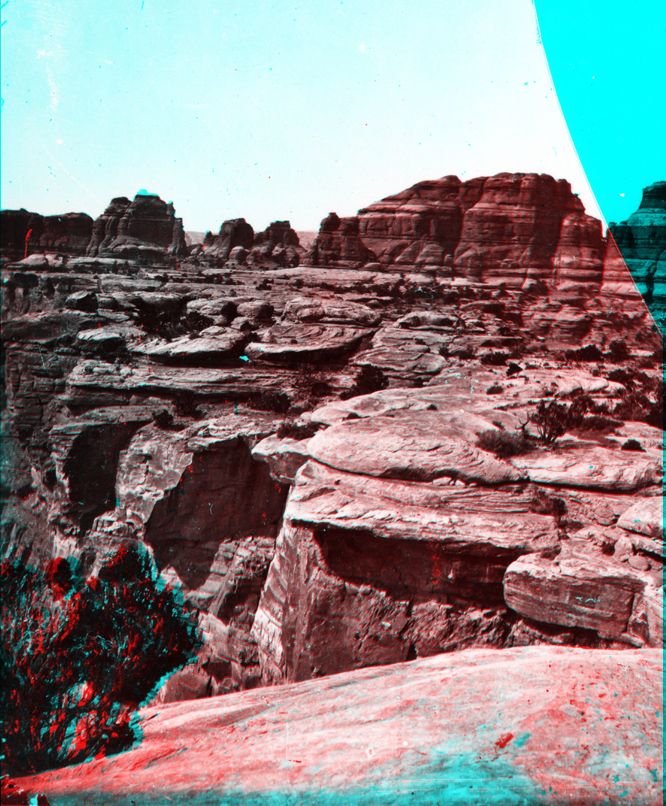
USGS Earth Science Photographic Archive digital file: hjk00747
The Organ Rock Sandstone (middle Permian) forms the core of the upland canyons in the Confluence area, particularly through the Needles District of Canyonlands, east of the river. In real color, the strata consist of reddish brown and white beds of arkosic sandstone ("arkosic" means that the sediments are rich in grains of feldspar minerals). The reddish color comes from a high hematite and other iron-oxide minerals that cement the sand beds that are locally cross-bedded. The arkosic content suggests that the original sediments were likely derived from the "Uncompahgre Uplift" region, an ancient upwarp that formed during Pennsylvanian and Permian time throughout the western Colorado region. This upwarp shed sediments into surrounding basins, including the Paradox Basin, from Pennsylvanian through early Triassic time. The source of much of the sediments where ancient uplifts that existed in the Colorado Front Range region (called the "Ancestral Rockies" that included the Uncompahgre Uplift). These uplifts eroded away and/or were buried by younger sediments derived from mountain ranges forming to the west in the Cordilleran region and possibly as far east as the Appalachian region.